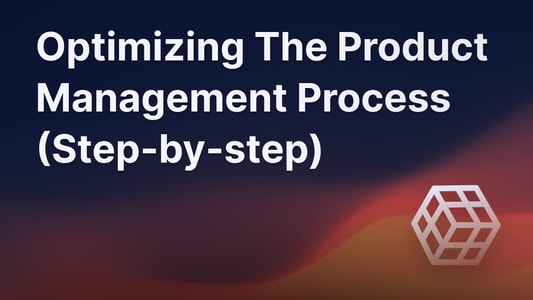Blog ComparisonsCanny Pricing 2024: Is It Worth It?
Canny Pricing 2024: Is It Worth It?
Does Canny's pricing feel too crispy? In this post, we'll dive into the details of each plan, everything that affects them, and ultimately find out whether it's a good deal for your use case or not. Stay tuned!

Considering Canny for feedback collection, but the pricing feels kind of crispy? You're not the only one.
In this blog, we'll break down Canny's pricing and see if it's really worth your dollars. This is your one-stop guide for everything you need to know, so let's get started! 👇

Canny pricing in 2024
Canny offers four pricing plans to choose from. Each is limited by features and admin seats.

1. Free plan
Canny offers a limited Free plan, allowing only 100 monthly active posts. You get all the basic features like a public roadmap, a changelog, and single sign-on, plus:
- 3 owners/managers
- 1 feedback board
- 1 integration
It’s okay for testing Canny for a bit longer than the 14-day trial, but most of you’ll have more posts in a flash. Moreover, you’ll find far better free tiers from competitors.
2. Starter Plan ($99/mo)
This is Canny’s second plan that they created in an attempt to capture the middle market. But it just removes the post limit for $99 a month. If you go with the yearly billing for $948, it’s $79/mo. Here’s everything you get:
- Still 3 owners/managers (+ $20/mo for additional)
- 3 feedback boards
- 1 prioritization roadmap
- 2 integrations
- Custom domain
Essentially, it offers the same functionality as alternatives’ lowest tiers, costing between $0-30/mo.
3. Growth Plan ($399/mo)
This is the only viable plan that grants actually useful features. However, it costs $399/mo (or $359/mo with yearly billing.) Here’s everything you get for this price:
- 5 owners/managers (+ $40/mo for additional)
- Unlimited boards
- Unlimited roadmaps
- Unlimited integrations (except HubSpot and Salesforce)
- Private boards
- User segmentation
- Custom statuses
It has all the features you’d need for efficient feedback collection and management but comes at a 10x higher cost than alternatives’ equivalent plans.
4. Business Plan (custom)
This plan is meant for enterprises and comes with a custom quote from Canny’s sales team. It offers flexibility and additional branding and security features for large businesses. You’d need it to access the following integrations:
- Azure Active Directory
- Azure DevOps
- Okta
- One Login
- OpenID Connect
- HubSpot (costs extra)
- Salesforce (costs extra)
Note: Canny has stated that all new feature releases will only be available on the Growth plan and higher.
Who is an Owner/Manager in Canny?
All of Canny’s plans limit the number of Manager seats you can have. But who counts as the owner/manager?
- Owners/managers are admins who can edit, update, add, and prioritize feedback and use roadmaps. This role can also access billing, settings, and company profile. They are usually people from your product team.
- Contributors are your teammates (also admins) who can only submit feedback. They can't edit, delete, or update ideas. Usually, these are other teams, like customer success, that aren’t necessarily focused on product but help contribute ideas. While the Free and Starter plan don’t allow contributors, you can have an unlimited number of them on Growth and Business plans.
- End users are essentially your customers or everyone who votes, posts, or comments on feedback. All plans allow for unlimited end-users.
Does Canny have a free trial?
Yes, Canny offers a 14-day free trial on the Starter and Growth plans with no credit card required.
To try out the Business plan, you’ll have to contact their sales team and get a demo first.
Does Canny offer discounts?
Canny offers three types of discounts:
- Early-stage startups - 75% off the first year & 50% off the second year
- Annual - 20% off for Starter and 10% off for Growth with yearly billing
- Nonprofit organizations - contact the team for details
To see if you qualify for the startup or nonprofit discounts, you'll have to contact the team.

Canny pricing calculator
Canny's pricing depends on the size of your team, billing type, and the features you need.
Here are some pricing examples to help you understand what it will cost you. We also included a comparison with Featurebase, an alternative to Canny.
1. Scenario: You’re a small startup with 3 admins
Say you’re a smaller startup with a lot of feedback pouring in that you want to efficiently manage in the same space. You want a custom domain and a few integrations.
You’ll probably be fine with Canny’s Starter plan, which removes the post limit and includes a custom domain and 2 integrations. It costs $99/month.
Here's a table comparison for 3 admins in Canny vs Featurebase:
| Monthly (3 admins) | Yearly (3 admins) | |
|---|---|---|
| Canny | $99/month | $948/year ($79/mo) |
| Featurebase (for comparison) | $49/month | $480/year ($40/mo) |
Featurebase is 2x cheaper and offers even more boards, admins, and unlimited integrations on the same $49/month plan. Learn more here →
2. Scenario: You’re a larger company with 10 admins
You are a larger business with 10 admins looking for an effective tool to give your big user base a voice and understand what to build next. You'll likely need features like user segmenting, many feedback boards, and integrations such as Jira or Slack.
This means you'll have to go with Canny’s Growth plan, which costs $399/mo, and buy an extra 5 seats for $40 each.
Here's a table comparison for 10 admins in Canny vs Featurebase:
| Monthly (10 admins) | Yearly (10 admins) | |
|---|---|---|
| Canny | $599/month | $6,468/year ($539/mo) |
| Featurebase (for comparison) | $119/month | $1,224/year ($102/mo) |
Again, Featurebase is much more affordable. You get all the same features and more while saving over $5,200 each year. Learn more here →
What if Canny is too expensive for me?
Don't worry. You wouldn't be the only one. 🤒
Luckily, many affordable alternatives offer the same features and more. Here’s the list of the 16 best Canny competitors in 2024:
- Featurebase - All-in-one feedback tool, best value for money
- Frill - Simple design and lightweight widgets
- Nolt - Great for small teams, limited features
- Upvoty - Aged user interface but affordable
- FeatureOS - Good for collecting user feedback, poor for prioritizing it
- Producter - For larger teams and issue management
- Productboard - Best for issue management, poor collection features
- Sleekplan - Most affordable pricing, limited features
- Userback - For large teams with many products
- Fider - Open-source option for small startups
- GetBeamer - Comprehensive changelog software, no collection
- FeedBear - Cheap feedback tool with limited features
- Feature Upvote - Simple feedback boards, expensive
- UserVoice - All-in-one feedback suite for enterprises
- Headway - Very simple changelog tool for small teams
- Pendo - Complete customer experience software for enterprises
You can read more about all Canny alternatives here, where we analyze the details of each tool and find out which one is the best.
But before you rush off to make your choice, let's also go over Canny’s drawbacks that you should keep in mind when considering Canny or its competitors. 🔎
Canny drawbacks to keep in mind
- Expensive
Canny's pricing gets quite expensive. Their basic plan is $99/mo, yet it offers the same features that other companies provide for free. Their second plan costs $399/mo, equivalent to what alternatives charge around $90 for. Canny does offer a free plan, but it limits you to just 100 posts a month, which many of you will quickly exceed. - Constantly changing pricing
Moreover, Canny plays around with their pricing more often than not. Say you joined Canny on the fresh $99/mo plan, but in a year, they decide it's not worth hosting this tier after all. Now you're suddenly forced to go with the $399/mo plan. - Missing crucial features
Canny lacks many critical features for feedback management, the first being anonymous posting. Without this feature, users must always log in to submit feature requests, causing friction. They also miss changelog features like popup widgets and automated feature release emails. To top it off, it’s only available in English. These drawbacks may not be deal breakers but should be considered for the money they ask. - Poor for prioritizing feedback
Canny offers a limited prioritization framework that's quite inflexible and can't be customized for individual workflows. They also don't provide prioritization matrices like value/effort, which many PMs use daily in their work. - No product improvements
Another huge reason many teams look for alternatives is that Canny has been heavily prioritizing sales over product improvements. They target enterprise customers, making the tool complex and new updates useless for regular users. Canny has even stated that all new feature releases will only be available on the $400/mo plan.

So, is Canny worth it?
Short answer: If you're an enterprise, then maybe. If you're anyone else, then no.
Longer answer: Canny is more intuitive and modern than many original big feedback platforms meant for larger companies. That’s why it’s a good alternative for enterprises.
However, their expensive pricing and limited plans make them unviable for smaller and medium-sized companies. It’s hard to justify paying $399/mo for feedback collection when many competitors offer the same features for $49 or less.
Featurebase is one of the best affordable Canny alternatives, offering all the same features and even more. It comes with a Free Plan that allows unlimited posts. You can automatically migrate over from Canny in seconds, so there's no downside to trying it. 👇
The simple feedback tool with feature voting for your customer feedback. Built-in the 🇪🇺.
© 2024 Featurebase. All rights reserved.


